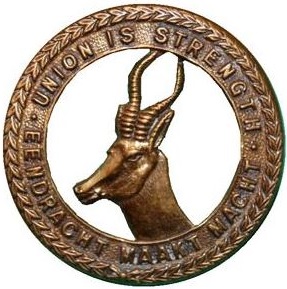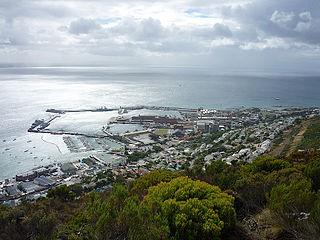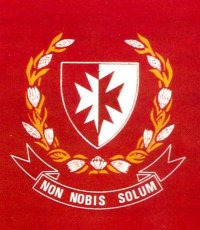Related Research Articles

The South African Army is the principal land warfare force of South Africa, a part of the South African National Defence Force (SANDF), along with the South African Air Force, South African Navy and South African Military Health Service. The Army is commanded by the Chief of the Army, who is subordinate to the Chief of the SANDF.
The 1st South African Infantry Division was an infantry division of the army of the Union of South Africa. During World War II the division served in East Africa from 1940 to 1941 and in the Western Desert Campaign from 1941 to 1942. The division was disbanded on 1 January 1943, for conversion into what would become the 6th South African Armoured Division. The division was also briefly active after the war from 1 July 1948 to 1 November 1949.

The Solomon Mahlangu Regiment is a reserve infantry regiment of the South African Army.

The Andrew Mlangeni Regiment is a reserve infantry regiment of the South African Army.

The Sandfontein Artillery Regiment is a reserve artillery regiment of the South African Army.

The Chief Langalibalele Rifles is a reserve infantry regiment of the South African Army.

The Buffalo Volunteer Rifles (BVR) is an infantry regiment of the South African Army. As a reserve unit, it has a status roughly equivalent to that of a British Army Reserve or United States Army National Guard unit.

The Kimberley Regiment is an infantry regiment of the South African Army. As a reserve unit, it has a status roughly equivalent to that of a British Army Reserve or United States Army National Guard unit.

The Chief Maqoma Regiment is a reserve infantry regiment of the South African Army. The regiment is located in the city of Port Elizabeth.

The General Jan Smuts Regiment is a reserve mechanised infantry regiment of the South African Army.

The Johannesburg Light Horse Regiment, is a reserve armoured car reconnaissance unit of the South African Army.

The Nelson Mandela Artillery Regiment is a reserve artillery regiment of the South African Army and part of the South African Army Artillery Formation.
The Cape Colonial Forces (CCF) were the official defence organisation of the Cape Colony in South Africa. Established in 1855, they were taken over by the Union of South Africa in 1910, and disbanded when the Union Defence Forces were formed in 1912.

The South African Overseas Expeditionary Force (SAOEF) was a volunteer military organisation in World War I.

South Africa currently does not have a marine corps, though in the past it did. It was originally set up as a sub-branch of the South African Navy during the apartheid era, with the primary purpose of protecting the country's harbours (1951-1955). Then it was recreated in 1979 during the South African Border War as 1-Marine Brigade with the aim of serving as marine infantry (1979-1990). Today, the SAN Maritime Reaction Squadron is the closest analogue to a marine corps South Africa has.
The South African 1st Infantry Brigade was an infantry brigade of the army of the Union of South Africa during World Wars I and II. During World War I, the Brigade served as a British formation in Egypt and on the Western Front, most famously the Battle of Delville Wood. It was reactivated at the start of the Second World War as a South African formation and served in East Africa and the Western Desert; the Brigade disbanded on 1 January 1943.
The 2nd South African Infantry Brigade was an infantry brigade of the army of the Union of South Africa during World War II. The Brigade formed part of the 1st South African Infantry Division and was formed on 13 August 1940. It served in East Africa and the Western Desert and was disbanded on 1 January 1943.

1 Medical Battalion Group is a Medical Battalion in the South African Medical Health Services (SAMHS), part of the South African National Defence Force (SANDF). As a reserve unit, it has a status roughly equivalent to that of a British Army Reserve or United States Army National Guard unit. It is based in the city of Durban in KwaZulu-Natal, South Africa.
This page details the South African Army order of battle in 1940, before and after the formation of expeditionary forces.
References
- ↑ McKenzie, Angus G (1957). The Dukes - A History of the Duke of Edinburgh's Own Rifles. Cape Town: Published for the Regimental Council of the Duke of Edinburgh's Own Rifles by Galvin & Sales. OCLC 19862498 . Retrieved 19 December 2014.
- ↑ Orpen, Neil D. (1984). Cape Town Rifles: Dukes. Cape Town: Cape Town Rifles Dukes Regimental Council. ISBN 9780620083409. OCLC 16870041 . Retrieved 19 December 2014.
- 1 2 3 4 Crook, Lionel, Col (Rtd) (1994). Greenbank, Michele (ed.). 71 Motorised Brigade: a history of the headquarters 71 Motorised Brigade and of the citizen force units under its command. Brackenfell, South Africa: L. Crook in conjunction with the South African Legion. ISBN 9780620165242. OCLC 35814757.
- ↑ Orpen, Neil D. (1965). Gunners of the Cape; the story of the Cape Field Artillery. Cape Town: C.F.A. Regimental History Committee. OCLC 194425 . Retrieved 19 December 2014.
- ↑ Orpen, Neil D. (1970). The Cape Town Highlanders, 1885-1970 (eBook) (Electronic reproduction ed.). Cape Town: Cape Town Highlanders History Committee. OCLC 682854292 . Retrieved 19 December 2014.